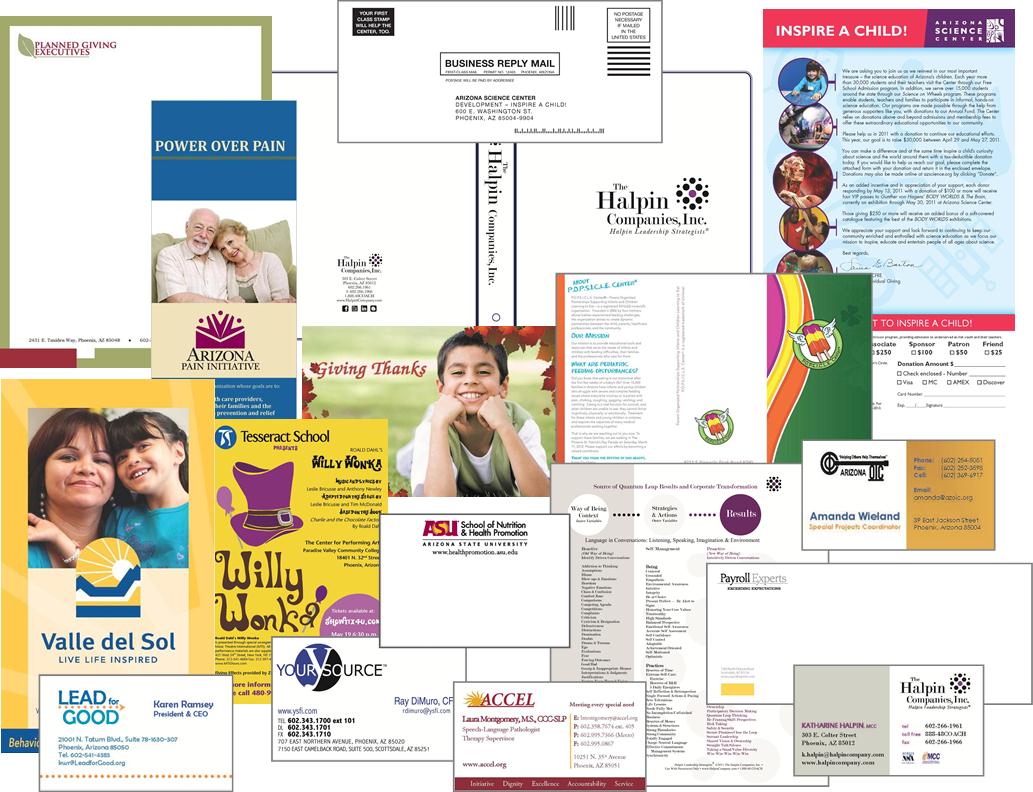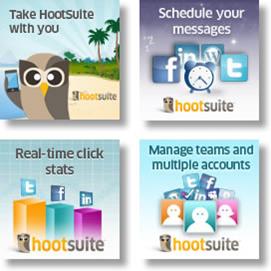direct mail
It’s Small Business Week and I thought I’d share some interesting tidbits from the Bank of America Small Business Owner Report, 2013.
Small business owners contribute to their employees’ happiness through:
- Flexible hours/work from home options (45%)
- Health/wellness benefits (33%)
- Additional amenities (healthy snacks, free lunches, massages) (31%)
- Discounted services and/or goods (31%)
- Allow use of social media during work hours (24%)
- Team building activities such as sports or excursions (23%)
- Time to volunteer (13%)
-
On-site child care services (12%)
Effective marketing tactics for small business owners include:
- Word of mouth and customer referrals (86%)
- Networking with other businesses (53%)
- Advertising (i.e. print, broadcast, radio) (52%)
- Direct mail or email (45%)
- Social media (41%)
- PR and media relations (33%)
Here’s an excellent infographic from Sage:
Feel free to share! If you have any good small business stories to tell, please do!
Most small businesses and nonprofits use images to capture their target markets’ attention. Nothing tells a story better than a good quality image, right?
But, what if those images don’t align with your organization’s brand? What then?
Here’s a good example of what I mean:
I received a fundraising solicitation from the American Heart Association recently, and with the direct mail piece came a set of address labels.
(Just an aside: If I Get Another Set of Address Labels I’m Going to Scream!)
 There’s nothing unusual about this except the images don’t quite match the organization’s brand image. If I hadn’t checked the envelope and letter, I would have thought the donation request came from a humane society or other animal rights group.
There’s nothing unusual about this except the images don’t quite match the organization’s brand image. If I hadn’t checked the envelope and letter, I would have thought the donation request came from a humane society or other animal rights group.
Now, don’t get me wrong. The American Heart Association is an excellent organization - one the national biggies and worthy of our support. But dogs?
Maybe the fundraisers thought that dogs are so popular that donors would use the labels more. Or, maybe they’ve done some research that proves me wrong. Maybe the organization has a better response rate when they use dog photos in its direct mail.
My professional opinion would suggest that all images used in marketing be connected to the brand’s image and mission. Most people scan marketing collateral so if you don’t grab their attention immediately, they’ll hit the ‘delete’ button or toss the mail.
Did I just contradict myself and make the case for using dog images to capture attention - or not? :) What do you think?
 Sounds like an oxymoron, doesn’t it? Do you outsource your company’s or nonprofit’s marketing tactics to different suppliers? For example, do you have a separate supplier for Web design/development, print graphic design, blog maintenance and/or hosting, direct mail, etc.? If yes, do they understand marketing?
Sounds like an oxymoron, doesn’t it? Do you outsource your company’s or nonprofit’s marketing tactics to different suppliers? For example, do you have a separate supplier for Web design/development, print graphic design, blog maintenance and/or hosting, direct mail, etc.? If yes, do they understand marketing?
Here’s a good example:
A friend has a Web design/hosting supplier on retainer for her company’s Web sites and blog. With the exception of adding blog content, every time she needs to make a change, she has to call the supplier.
Today, I was teaching her how to use HootSuite to help make her social media (SM) marketing easier to manage. The program allows her to manage all her SM profiles in one platform.
Since she was complaining about getting hundreds of blog spams daily, I went into her WordPress administration panel to see what was going on. Now get this… The comment feature was turned off! The supplier’s solution to eliminate her spam was to turn off the ability for readers to comment on her posts! That’s like cutting off your nose because you have a cold.
Social media is a two-way street
As anyone in marketing will tell you, blogs and other social media give us ways to connect and engage with our target audiences. It is a two-way street, not a one-sided blast of promotion. Removing the comment feature defeats the purpose of writing a blog altogether.
In addition, the blog design does not include any sharing buttons or calls to action. There is no place to sign up for the newsletter or connect on social media sites. There are no graphic images in each post - which have been shown to attract more attention.
So, my question is: what good is this supplier if its people do not understand marketing?
There are many marketing suppliers eager to take your money and do what you ask. But, what do they tell you when your requests make no marketing sense? Do they advise you on the bigger marketing picture? Do they ask what your marketing strategy is so they can help your organization reach its marketing objectives? Many do not.
My advice?
No matter what your organization’s size, have a plan in place before you contract with suppliers. They won’t know where your organization wants to go, or what it wants to accomplish unless you tell them. They can do a much better job when you provide them with a brief or written instructions of your project or goals.
If your marketing suppliers are specialists in their microcosm of the marketing world, you can’t expect them to know everything about marketing. It may be cost and time-efficient to work with a marketing generalist or strategist who has a wide range of marketing knowledge and can help you define what you want and need. Agencies can do that for you. Hiring an inside marketing specialist to project manage your organization’s marketing needs is also a good move, if you can afford it. Try to ensure that your internal marketer has the right knowledge and experience level to match your organization’s needs and is up to date on marketing studies and trends.
One thing to remember - marketing is not an exact science. When you work with a marketer who “gets” the bigger picture, you can expect to test and tweak your tactics until you get positive results.
 Some businesses and organizations are so organized; they either have triggered digital communications set to launch or automated correspondence ready to go. But, what happens when they get ahead of themselves? They look a bit dumb!
Some businesses and organizations are so organized; they either have triggered digital communications set to launch or automated correspondence ready to go. But, what happens when they get ahead of themselves? They look a bit dumb!
Hubby and I have a home warranty insurance plan that covers all our appliances in case of repair or replacement. Well, the oven has been repaired so many times that it’s not worth it any longer. So, the insurer wants to replace it. Fine with us!
There’s only one caveat. The built-in space can accommodate only ONE brand and model - a Kitchenaid - the brand we’re replacing.
The insurer contracts with Sears, so we’re scheduled to have our oven replaced in late March when the unit is available. Last week, we received an automated letter from Sears.
Your new oven is running beautifully. So why take chances down the road? Protect it with a Master Protection Agreement for as little as $6.09 a month.”
The letter continues with the usual persuasive marketing copy. But, wouldn’t it have been more appropriate if the letter had arrived AFTER installation? Duh.
Check your automated and triggered communications every once in a while to ensure that the “right” actions are triggering the matching communication. Otherwise, your company or organization may look a bit dumb, too.
Has this ever happened to you? Please share!

 In today’s marketing world, digital marketing has certainly gained huge market share in many business and nonprofit budgets. So, what place do printed brochures have anymore?
In today’s marketing world, digital marketing has certainly gained huge market share in many business and nonprofit budgets. So, what place do printed brochures have anymore?















